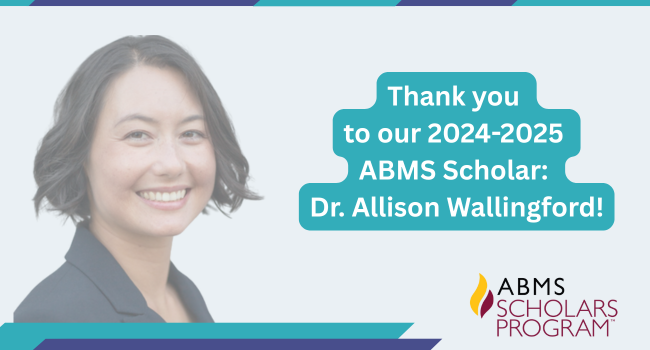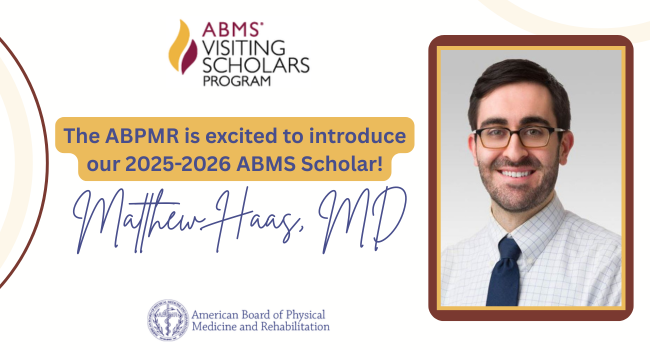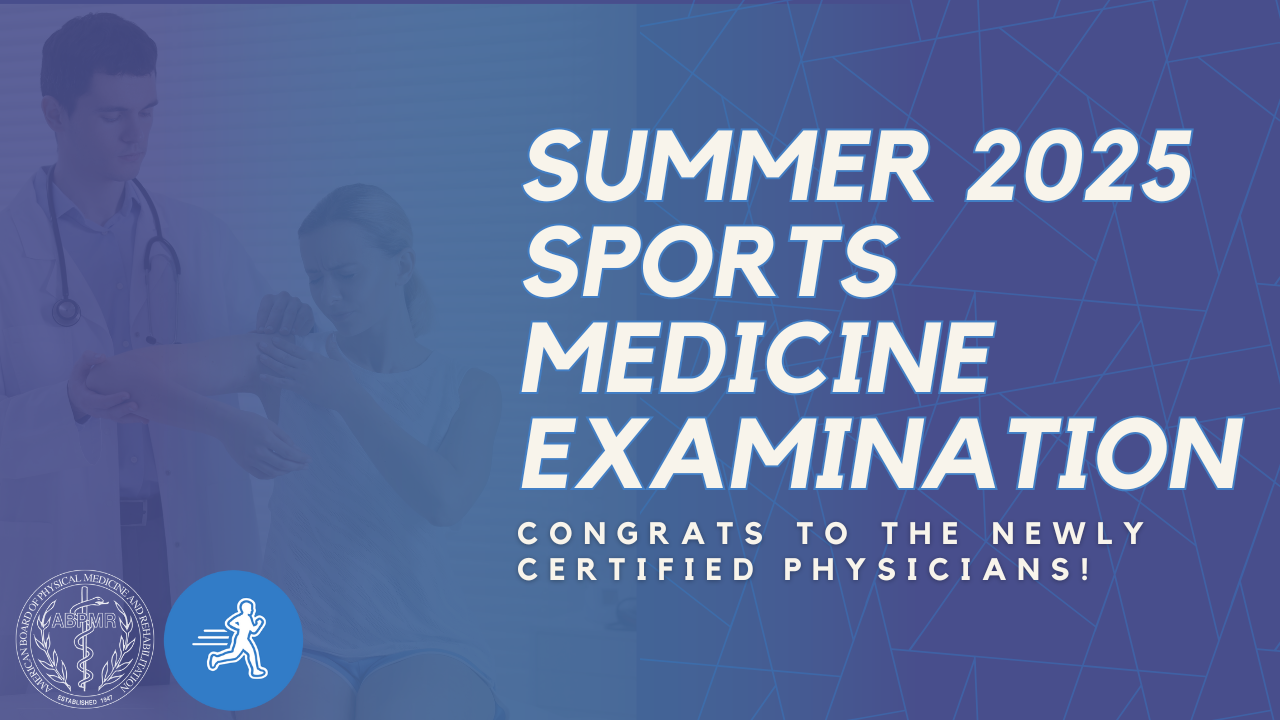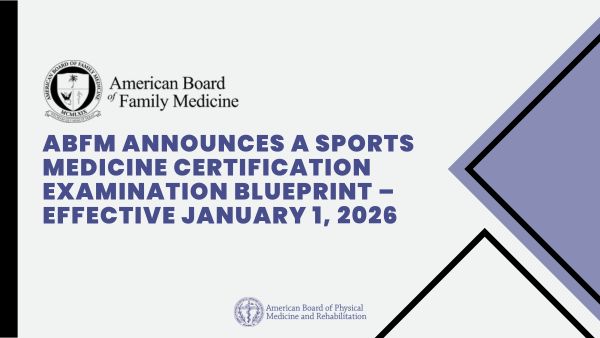Physician Features
Volunteer Spotlight: Shashank Davé, DO
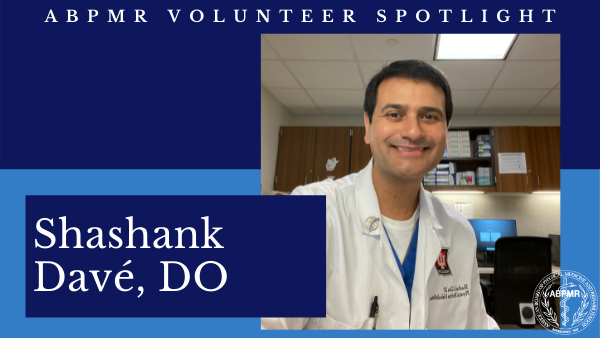
The July Volunteer Spotlight feature is Shashank Davé, DO.
Since 2016, Dr. Davé has served as Associate Professor of Clinical PM&R at Indiana University (IU) School of Medicine after previously serving as Assistant Professor since 2005. He completed his schooling and training in Chicago with college and residency at Loyola University, and medical school at Midwestern College of Osteopathic Medicine.
Dr. Davé became board certified in PM&R in 2006 and pain medicine in 2008; he began volunteering with the ABPMR in 2010 as an oral examiner. Currently, he serves as an oral examiner for the Part II Examination and as an item writer for the Part I Examination.
We spoke with Dr. Davé about the transcendental experience that convinced him to pursue PM&R, his decade of volunteer experience, and his many unique hobbies.
How did you get started in PM&R?
I got into PM&R thanks to none other than Dr. Michelle Gittler. In medical school, I had trouble figuring out which field to pick. My dad was a physician who passed away about 20 years ago, but I had asked him when I was a second-year med student, ‘How will I know which field to pick?’ He told me in my third year there will be one physician who will inspire me and that’s how I’ll know.
In my third year, I was assigned to a rotation in community medicine and luckily landed on Dr. Gittler’s service. I will never forget the first day I met Dr. Gittler. It was a cold and blustery but sunny Chicago winter day. It was midmorning and all the trainees were in a PT gym waiting for her to arrive. The gym had these huge windows, and the sun was shining in and pointed right at the entrance to the gym. Dr. Gittler arrived and busted open the doors, and like a deity with this aura that surrounded her, she screamed at the top of her lungs, ‘I LOVE MY JOB!’ She noticed what kind of response she got and screamed again, ‘I LOVE MY J-O-B!’ It was one of those moments where time froze for me, and after that it was my mission to figure out why she loved her job so much. After that rotation I understood, and the rest is history.
Where did your career go after you graduated from med school and finished residency?
To quote the Grateful Dead, ‘It’s been a long, strange trip.’ The best three years of my life were when I was in residency. It was a combination of classmates, attendings who had a zeal for teaching, the opportunities I had to teach medical students and co-residents. I loved the academic environment and staying current with the field, so I sought out jobs in academics.
As I was looking around for jobs, Dr. Randy Braddom had started the PM&R Department at Indiana University School of Medicine with Dr. Ralph Buschbacher as the chair of the department. The academic department was expanding, and they needed someone to provide consults and outpatient musculoskeletal and spasticity management. I took that job and have basically stayed there ever since.
I started out doing inpatient to outpatient continuity clinics, but have narrowed my focus to spasticity, interventional spine, and musculoskeletal management. I am heavily involved in resident and med student education, and I’m also in charge of resident didactics as the Assistant Program Director. It’s a lot of fun interacting and watching the residents grow throughout the years.
How did you get started in volunteering for the ABPMR?
My program director at Loyola was Dr. Jay Subbarao, a former ABPMR board director, so I got exposed during residency to how important the ABPMR is for the future of our field. He encouraged us to stay connected to our field through national organizations like the ABPMR.
I remember the day in 2010 when I got the invitation to serve as an oral examiner. I was literally on cloud nine and glowing; I told everyone I knew about it.
In 2015, I was asked to write questions for the Part I Examination and have continued that. In 2018, I served on the Part I Examination standard setting panel to set the passing standard of the Part I Examination. That was a huge honor. We reviewed each question on the exam and assessed the level of difficulty to determine a passing standard based on knowledge level. I was surprised to learn how much objectivity there is when it comes to exams—I never knew the process before.
After volunteering for a decade and taking on multiple roles, what about volunteering do you enjoy?
It really keeps you on your toes! For item writing, I look up answers and references for each question I write. I also write outside my practice focus, so that forces me to research and think about clinical applications and vignettes, which ultimately helps me in my practice.
When I connect with other ABPMR volunteers, I’m able to network and see my local work in a broader context. I’ve learned how closely connected we are as a field despite its variability. The more our field expands and grows, the more unified our mission is: Improve functionality and quality of life.
What would you tell a colleague considering volunteering?
I would ask, ‘What are you waiting for?’ I recommend starting slowly with one activity at a time, understanding the time commitment is nominal and the reward is much greater than time spent. I also recommend reaching out to a volunteer directly to hear their experience.
What do you enjoy doing outside of work and volunteering?
Aside from spending time with my family and raising two boys, I’m a huge JFK assassination conspiracy buff and even took a course through the University of Virginia. Several years ago, I went to Dallas and went on a specially guided tour; I think I knew more about the assassination than the tour guide did! I’m also a wine enthusiast and tasting teacher—I’ve gone on several wine trips in the US and even abroad like France and Germany. A friend from my residency class and I have gone ghost hunting all around the country. He has all the equipment and we go to old hotels and mansions. Indiana is apparently big-time haunted!
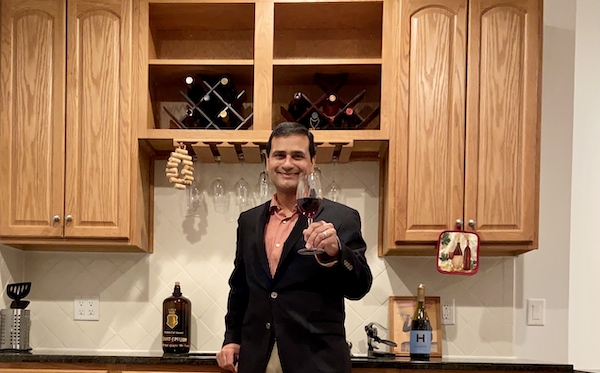
In his free time, Dr. Davé enjoys learning and teaching about wine.
Thank you, Dr. Davé, for the passion and excitement you bring to all your volunteer roles and your work over the past decade with the ABPMR. To all ABPMR volunteers who have dedicated so much of their time and effort to the field of PM&R: thank you!
